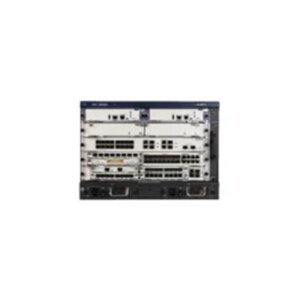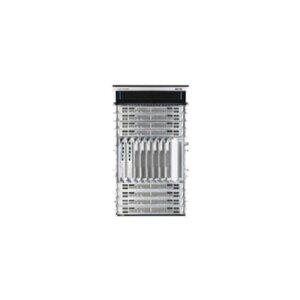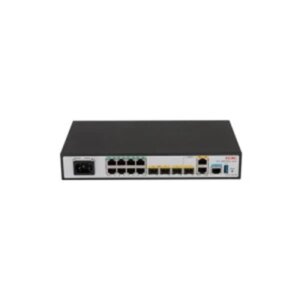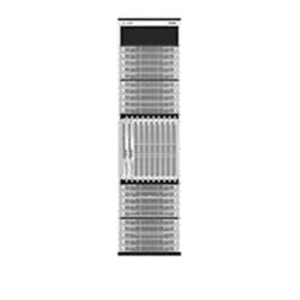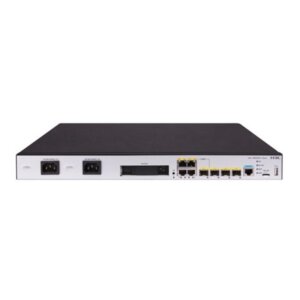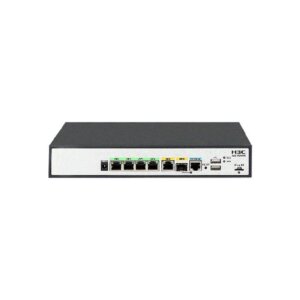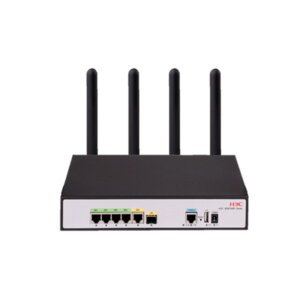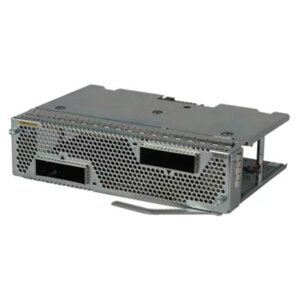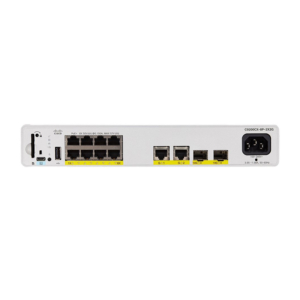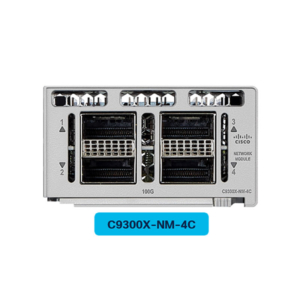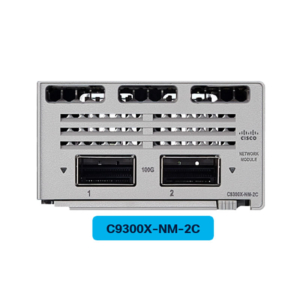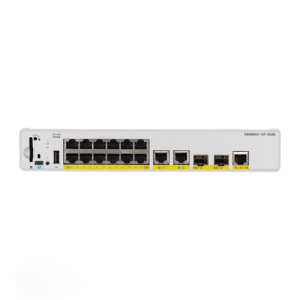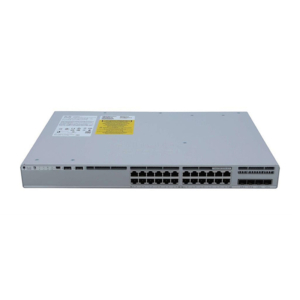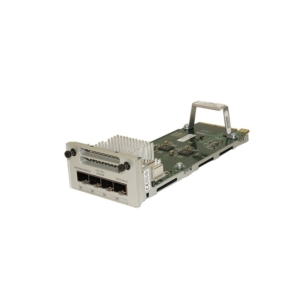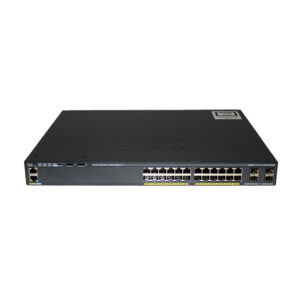IL CR19000 cluster router series (hereinafter referred to as the CR19000) is a set of new-generation core routers developed for service provider-level applications. It can be deployed as service providers’ backbone nodes and MAN core nodes, or data centers backbone interconnection nodes. The CLOS architecture, cutting-edge optical connection technology, and Comware V7 operating system enables the CR19000 to deliver extraordinary availability and compatibility, making it an ideal choice for service providers.
The CR19000 router series includes the following models: CR19000-8, CR19000-16, CR19000-20, and CR19000-MC. The CR19000-8, CR19000-16, and CR19000-20 provide 8, 16, E 20 service line-card slots, respectively. The CR19000-MC is a fabric card chassis (FCC) that provides interconnection and unified control of multiple CR19000-20 routers. The CR19000-8 can operate in single-chassis mode or the back-to-back cluster mode. The CR19000-16 can operate in single-chassis mode. The CR19000-20 can operate in single-chassis mode, back-to-back cluster mode, or multi-chassis cluster mode.
 H3C CR19000 Cluster Routers Series Data Sheet
H3C CR19000 Cluster Routers Series Data Sheet
| Articolo | CR19000-8 | CR19000-16 | CR19000-20 |
| Slot per MPU | 2 | 2 | 2 |
| Switching fabric slots | 6 | 6 | 8 |
| line-card slots | 8 | 16 | 20 |
| Capacità di commutazione | 43.2 Tbps | 86.4 Tbps | 172.8 Tbps |
| System aggregated throughput | 14.4 Tbps | 28.8 Tbps | 36 Tbps |
| Power module | 8 power modules per chassis
support for redundancy and smart power management |
16 moduli di potenza
support for redundancy and smart power management |
24 power modules per chassis
support for redundancy and smart power management |
| Vassoi di fan | 6 fan trays per chassis
support for redundancy and smart heat dissipation |
2 fan trays
support for redundancy and smart heat dissipation |
33 fan trays per chassis
support for redundancy and smart heat dissipation |
| Dimensioni (A × L × P) | 843 × 440 × 743 mm (33.19 × 17.32 × 29.25 In), 19 RU | 931 × 440 × 857 mm (36.65 × 17.32 × 33.74 In), 21 RU | 1820 × 440 × 850 mm (71.65 × 17.32 × 33.46 In), 41 RU |
| Temperatura di esercizio | 0da °C a 45 °C (32°F a 113°F) | ||
| Umidità operativa | 5% A 95%, senza condensa | ||
| Operatingaltitude | –60 m (–196.85 ft) A +5000 M (+16404.20 piedi) | ||
| Porti | 1000BASE-X-SFP fiber ports
10GBASE-R/W-SFP+ fiber ports 40GBASE-R-QSFP+ fiber ports 100GBASE-R-CFP2 fiber ports 100GBASE-R-QSFP28 fiber ports POS-OC192c/STM64c-XFP fiber ports POS-OC48c/OC12c/OC3c-SFP fiber ports |
||
| EMC standards | Parte FCC 15 (CFR 47) CLASSE A
CIEM-003 CLASSE A VCCI-3 CLASS A VCCI-4 CLASS A CISPR 22 CLASSE A IN 55022 CLASSE A AS/NZS CISPR22 CLASS A CISPR 24 IN 55024 IN 61000-3-2 IN 61000-3-3 IN 61000-6-1 CERCA EN 300 386 IN 301 489-1 IN 301 489-17 |
||
| Safety standards | UL 60950-1
CAN/CSA C22.2 N 60950-1 CEI 60950-1 EN 60950-1/A11 AS/NZS 60950 IN 60825-1 IN 60825-2 FDA 21 Sottocapitolo J GB 4943 |
||
| Interfacce | GE, 10GE, 40GE, and 100GE interfaces
OC-192c/STM-64c POS interfaces POS-OC48c/OC12c/OC3c-SFP interfaces |
||
| Data link layer | PPP, HDLC
Ethernet link aggregation, port mirroring DLDP |
||
| QinQ | VLAN termination | ||
| Traffic statistics | Traffic statistics on both the incoming and outgoing traffic | ||
| Qos | Marcatura/osservazione della priorità
AUTO (Ingress/Egress) CBQ Congestion management Queue scheduling QoS policy (applied on an interface, globally, and on the control plane) Dynamic modification of QoS policies QPPB |
||
| ACL | ACL di ingresso/uscita
Basic ACLs, advanced ACLs Applying an ACL to an interface or globally |
||
| IPv4 protocol | TCP, UDP, RawIP, Ping, Traceroute
Telnet, FTP, TFTP ICMPv4 DNS DHCP NTP ARP, ARP Proxy |
||
| IPv6 protocol | Dual IPv4 and IPv6 protocol stacks
TCP6, UDP6, RawIP6, Pingv6, Traceroute6 Telnetv6, FTPv6, TFTPv6 DNS6 ICMPv6 VRRPv3 DHCPv6 ND PMTUD (IPv6) 6PE |
||
| IPv4 routing protocol | RIPv1/v2
OSPFv2 È-È BGPv4 IPv4 static routing/routing policy/route recursion/policy-based routing |
||
| IPv6 routing protocol | RIPng
OSPFv3 IS-IS6 BGPv4+ IPv6 static routing/routing policy/route recursion/policy-based routing |
||
| Strato 3 multicast | Static multicast routes
IPv4 intra-AS multicast routes IPv4 inter-AS multicast routes IPv4 multicast group management IPv6 intra-AS multicast routes IPv6 multicast group management VPN multicast |
||
| Interconnect | VXLAN | ||
| MPLS | Basic MPLS
MPLS L3VPN VPWS/VPLS 6VPE MPLS TE P2MP |
||
| SDN | BGP-LS
BMP Flowspec Instradamento del segmento OpenFlow PCEP |
||
| Device security | Protection against data packet-based attacks
Protection against protocol packet-based attacks Attack detection Protection of protocol packets Diagnosis on packet transmitting and receiving |
||
| Network security | Packet validity check
uRPF Packet filtering ARP attack protection Protocol-based traffic limiting NetStream |
||
| User security | Device management security
AAA SSH |
||
| Device management | CLI management by accessing the device through console port, Telnet, or sTelnet (SSH) | ||
| File management | Uploading/downloading files through FTP/TFTP
Formatting files Creating, copying, deleting, saving files and directories |
||
| Network maintenance | Ping
TraceRoute LSP Ping/Tracert Loop detection on a port |
||
| Network management and monitoring | SNMPv3
IMC LLDP/LLDP-MED MIB PTP |
||
| Alta disponibilità | Hot swapping of cards
Redundancy of switching fabric modules Active/standby switchover Hot patching GR NSR VRRP, VRRPE BFD for VRRP/BGP/IS-IS/RIP/OSPF/static routing FR.IP |
||
 Fornitore di apparecchiature di rete IT
Fornitore di apparecchiature di rete IT


 Il tuo prodotto è originale??
Il tuo prodotto è originale?? SÌ, il nostro prodotto è originale, vendiamo solo prodotti originali H3C.
SÌ, il nostro prodotto è originale, vendiamo solo prodotti originali H3C.



